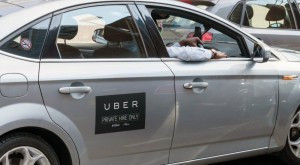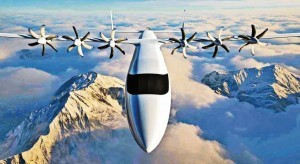Winds of Change
The "Galavano technique" has its readers worldwide, but most of them live here in Europe, and in most ways we live a European lifestyle, both at work and at home and in our leisure time. But there is one big exception. When it comes to computers and the Internet, the USA is dominant.
Computer hardware and the software I am using to write this letter are either American or made in the Far East for American companies. Personally, I am happy and accept this situation. But then we come to the so-called Big Tech - Amazon, Google, Facebook, and all the social media like Twitter, Facebook, WhatsApp and others. And a lot of people are not happy with these at all. They are concerned - and I totally agree with them - about two different things:
The first is about taxation and, in particular, corporation tax. I buy something from Amazon here in the UK, but magically Amazon pretends that I bought it from Amazon Luxembourg. It's similar with those who advertise on Google. These companies make many billions in sales to German, British and other European customers, but only pay millions in tax. This is money that should be going to our governments to pay for our roads, hospitals, police and the other needs of our society.
Apart from the financial aspects, there is the whole issue of data and information. I use Google a lot and find that I get a lot of advertising messages related to my Google searches. In other words, Google has created a profile of who I am and what my interests are. But the good news is that Google has now agreed to stop using so-called personalized cookies, the technology that allows them to do this. Google, after a brief battle with the Australian government, has now also promised to pay publishers such as Bertelsmann for links to articles in their publications. Facebook, on the other hand, has so far refused to do the same. However, Facebook is facing other problems. The Federal Trade Commission and 45 US states are suing Facebook for alleged anti-competitive behavior. Finally, there is the "stage or publisher" debate under this heading. The publisher Leuze is fully responsible for everything it publishes. Facebook, on the other hand, argues that it is merely a platform and cannot be held responsible for everything people post, whether it is lies or the well-known "hate speech".
This position collapsed when Twitter blocked President Trump's account. The British government is planning a new "Online Safety for Children" law. This is also urgently needed. The US Nation Center for Missing and Abused Children reported around 67 million abusive images online.
Our European lifestyle has been transformed by another American import, also internet-based. Uber cabs now operate in many European countries, as do other internet-based services such as Deliveroo (Fig. 1), which brings hot meals to our homes.
Deliveroo operates in 12 German states, brings meals from 115,000 restaurants and uses around 100,000 bicycle couriers. These and other services are known as the 'gig economy' because your Uber driver or Deliveroo courier is not an employee, but is treated as a contractor. As such, they are paid on a per-job basis (cab ride or delivery). They do not receive vacation pay or sick pay. And if no one wants a cab or a meal, these so-called contractors simply don't get paid.
Most people believe that these "gig economy" workers are being exploited, and of course the state has to make up the difference if their weekly earnings are below a certain level because they are unemployed. In this respect, the state subsidizes companies like Uber or Lyft.
 Fig. 2: Uber is under increasing legal pressure But the winds of change are blowing and many of these things will change in 2021. The British Supreme Court recently ruled that Uber's 70,000 British drivers are not self-employed, as Uber claims, but employees. And are therefore entitled to sick pay, vacation pay and a pension.
Fig. 2: Uber is under increasing legal pressure But the winds of change are blowing and many of these things will change in 2021. The British Supreme Court recently ruled that Uber's 70,000 British drivers are not self-employed, as Uber claims, but employees. And are therefore entitled to sick pay, vacation pay and a pension.
However, the matter has not yet been finally settled. Uber claims that its drivers only start working from the moment they accept a ride, but not during the time they have logged into the system and are available for work. So another battle will be fought. Meanwhile, Deliveroo, which pulled out of Germany a few years ago, has recently floated on the London Stock Exchange, but many have chosen not to invest because Deliveroo has so far refused to accept that the Supreme Court's ruling on Uber applies to them too. Deliveroo couriers even have to buy and maintain their own bikes. In short, in the UK at least, the entire so-called "In short, in the UK at least, the entire so-called 'gig economy' now has to operate in a new climate - and will have to raise its prices or perhaps go out of business altogether. No doubt the same will happen in Europe and elsewhere.
But there is another issue entirely: your Uber driver - who is an integral part of the Uber operation - does not pay VAT and neither does Uber itself for its use. According to UK government calculations, this means an annual loss of around €25 billion to the UK 'gig economy'.
I referred earlier to the American big tech companies that pay very little tax here in Europe. They were helped by President Trump's "Safe Harbor" law, which allowed US companies to avoid international taxation. Now President Biden has dropped this, clearing the way for 137 nations to agree on a framework for taxing digital profits. Minister Olaf Scholz has welcomed this decision, which will now lead to talks at the OECD (Organization for Economic Cooperation and Development). This will take some time, but it is hoped that a provisional agreement will be reached by July and that all the American big tech companies will have to pay their proper taxes. Most European countries will benefit from this. President Biden has also appointed a lawyer, Ms. Lina Khan, as commissioner of the powerful Federal Trade Commission, who has vowed to control the Big Tech companies, which are virtual monopolists.
I also pointed to the various social media platforms, almost all of which are American-owned, arguing that they are simply passive and have no responsibility for their content. This argument was undermined late last year when Twitter suspended President Trump's account. He was furious! There is so much vile content on many of these platforms. The UK government has made a start and will soon publish proposals for an 'Online Safety Law' to protect children from harmful material. This will require Facebook and other platforms to monitor their content more carefully - and this will cost them money - which they can easily afford. Facebook's last profit was 86 billion US dollars.
Conclusion: The golden age for US big tech companies seems to be coming to an end in 2021. They will have to pay their fair share of taxes and pay publishers for the use of their material, and they will be held more accountable for the content on their platforms. They've had it too easy for too long!
A home of their own
In many countries there is a shortage of housing, so house prices and rental costs are high. There is only one answer to this - build more houses. Which is happening everywhere. But if our grandparents were to see a building site today, in most cases they wouldn't see anything new or surprising. Just a few bricklayers carrying bricks and, after applying a layer of cement, placing one brick next to the other and so on.
 Fig. 3: Hadrian X , the Australian bricklaying robot, at work
Fig. 3: Hadrian X , the Australian bricklaying robot, at work
 Fig. 4: 15 new houses are made from artificial stone that hardens in sunlight and can be built like LegoSolittle change in over 100 years? Yes, there are innovations. We have factory-built houses that - once the concrete foundations have been laid - can be completed in just three days. But for reasons I don't understand, such factory-built houses are not widespread. But there are other innovations. In Australia, a company called FBR Ltd (formerly Fastbrick Robotics) (www.fbr.com.au) has developed a bricklaying robot called Hadrian X (presumably in honor of the Roman emperor Hadrian, who built a famous wall). In Australia, Hadrian X built a house with 3 bedrooms and 2 bathrooms in 3 days. Last year in Mexico, he built several 2-bedroom houses, each in less than a day (Fig. 3). On a 2-acre lot in Rancho Mirage, California, an unassuming desert town in California known for its resorts and golf courses, a vision for the future of housing is about to take shape. Almost 800 km away, in a warehouse in Oakland, California, humming 3D printers the size of garages are building the houses for the world's first fully 3D-printed housing development. It is the result of a partnership between two Californian companies, the real estate group Palari and Mighty Buildings, a building technology company. Rancho Mirage is not the first place to have 3D-printed buildings. In 2019, a Mexican charity built 3D-printed homes for low-income families, while in China, multi-story office buildings and apartments have been printed for years. But a pristine neighborhood of 15 eco-friendly printed homes that are large and aesthetically pleasing is groundbreaking, say the project's founders. Construction is expected to take 18 months, raising hopes that 3D printing will alleviate California's housing crisis. Due to rapid population growth, there will be a shortage of 3.5 million homes within four years.
Fig. 4: 15 new houses are made from artificial stone that hardens in sunlight and can be built like LegoSolittle change in over 100 years? Yes, there are innovations. We have factory-built houses that - once the concrete foundations have been laid - can be completed in just three days. But for reasons I don't understand, such factory-built houses are not widespread. But there are other innovations. In Australia, a company called FBR Ltd (formerly Fastbrick Robotics) (www.fbr.com.au) has developed a bricklaying robot called Hadrian X (presumably in honor of the Roman emperor Hadrian, who built a famous wall). In Australia, Hadrian X built a house with 3 bedrooms and 2 bathrooms in 3 days. Last year in Mexico, he built several 2-bedroom houses, each in less than a day (Fig. 3). On a 2-acre lot in Rancho Mirage, California, an unassuming desert town in California known for its resorts and golf courses, a vision for the future of housing is about to take shape. Almost 800 km away, in a warehouse in Oakland, California, humming 3D printers the size of garages are building the houses for the world's first fully 3D-printed housing development. It is the result of a partnership between two Californian companies, the real estate group Palari and Mighty Buildings, a building technology company. Rancho Mirage is not the first place to have 3D-printed buildings. In 2019, a Mexican charity built 3D-printed homes for low-income families, while in China, multi-story office buildings and apartments have been printed for years. But a pristine neighborhood of 15 eco-friendly printed homes that are large and aesthetically pleasing is groundbreaking, say the project's founders. Construction is expected to take 18 months, raising hopes that 3D printing will alleviate California's housing crisis. Due to rapid population growth, there will be a shortage of 3.5 million homes within four years.
3D printers use molten material to create layers from scratch. California homes use artificial stone, which hardens in sunlight and is stronger and lighter than concrete. The roof and insulation can also be printed so that the houses can be built as if they were made of Lego bricks. Up to 80% of the construction can be automated, with 95% less labor and ten times less waste than normal construction, Mighty Buildings claims. Sam Ruben, the company's co-founder, said his printers can produce a 33-square-meter house in 25 hours, working through the night while employees sleep.
The future of flying
Air travel is a major contributor to atmosphericCO2 emissions, and it is vital that we develop pollution-free technology for flying. But how? Today we are offered dozens of electric car models. There are electric trucks. We have electric trains, but there is no significant market for electric airplanes.
19-seater from France
 Fig. 5: The French company Aura Aero is developing this 19-seater airplaneHundreds ofcompanies around the world are working to develop this market. Every single one, as far as I know, is using lithium batteries as a power source. Recently, a French company, Aura Aero (www.aura-aero.com), based in Toulouse, announced progress on its Era (Electric Regional Aircraft) model, a 19-seater passenger aircraft (Fig. 5) that is scheduled to make its maiden flight in 2024 and enter service in 2025. Aura Aero has already started production of a two-seater aircraft, the "Integral", which will be built from lightweight wood and carbon fiber. Aura is working with Verkor, (http://verkor.com) in Grenoble, which is supplying the lithium batteries. The 19-seater aircraft will weigh approximately 8 tons, have 6 propellers and a range of approximately 450 km. A hybrid model with a gas turbine generator would increase the range to around 800 km, but would still - it is claimed - reduceCO2 emissions by 80%. The market for the new aircraft would be intercity services within France or perhaps between France and neighboring countries.
Fig. 5: The French company Aura Aero is developing this 19-seater airplaneHundreds ofcompanies around the world are working to develop this market. Every single one, as far as I know, is using lithium batteries as a power source. Recently, a French company, Aura Aero (www.aura-aero.com), based in Toulouse, announced progress on its Era (Electric Regional Aircraft) model, a 19-seater passenger aircraft (Fig. 5) that is scheduled to make its maiden flight in 2024 and enter service in 2025. Aura Aero has already started production of a two-seater aircraft, the "Integral", which will be built from lightweight wood and carbon fiber. Aura is working with Verkor, (http://verkor.com) in Grenoble, which is supplying the lithium batteries. The 19-seater aircraft will weigh approximately 8 tons, have 6 propellers and a range of approximately 450 km. A hybrid model with a gas turbine generator would increase the range to around 800 km, but would still - it is claimed - reduceCO2 emissions by 80%. The market for the new aircraft would be intercity services within France or perhaps between France and neighboring countries.
I believe this could be a commercially viable project. But is it a dead end? Lithium batteries are approaching their theoretical limit, and the longer a flight lasts, the more the gas turbine engine would be used, with similar emissions to a conventional aircraft.
Air cab from General Motors
Dozens of companies are developing air cabs for short-haul transportation. The American car giant GM (General Motors) is among them. It is perhaps the epitome of the American car, loved by stars from Elvis to US presidents and immortalized in countless songs. But now Cadillac wants to really take off. General Motors has unveiled a prototype for a flying Cadillac car that promises to whisk the driver across busy cities to a work meeting in a matter of minutes. At the recent (virtual) CES trade show, the company showed a computer-animated video of a single-seat autonomous aircraft known as eVTOL (electric vertical take-off and landing). It uses four rotors powered by a 90-kWh electric motor to take off, fly and land vertically. The black, sleek and futuristic-looking aircraft with a large window pane would take off from specially prepared helipads on buildings and in converted parking garages (Fig. 6).
 Fig. 6: Concept model of the "flying Cadillac" from GM
Fig. 6: Concept model of the "flying Cadillac" from GM
So what is the future of electric flying? The lesson from the world of cars and trucks is that hydrogen fuel cells are more suitable for trucks than lithium batteries. Would the same apply to airplanes? And then we have the jet engine, which we know works perfectly with biofuels and no doubt synthetic fuels produced by capturingCO2 from the atmosphere. It seems clear that the future of "green" aircraft propulsion has not yet been decided.


